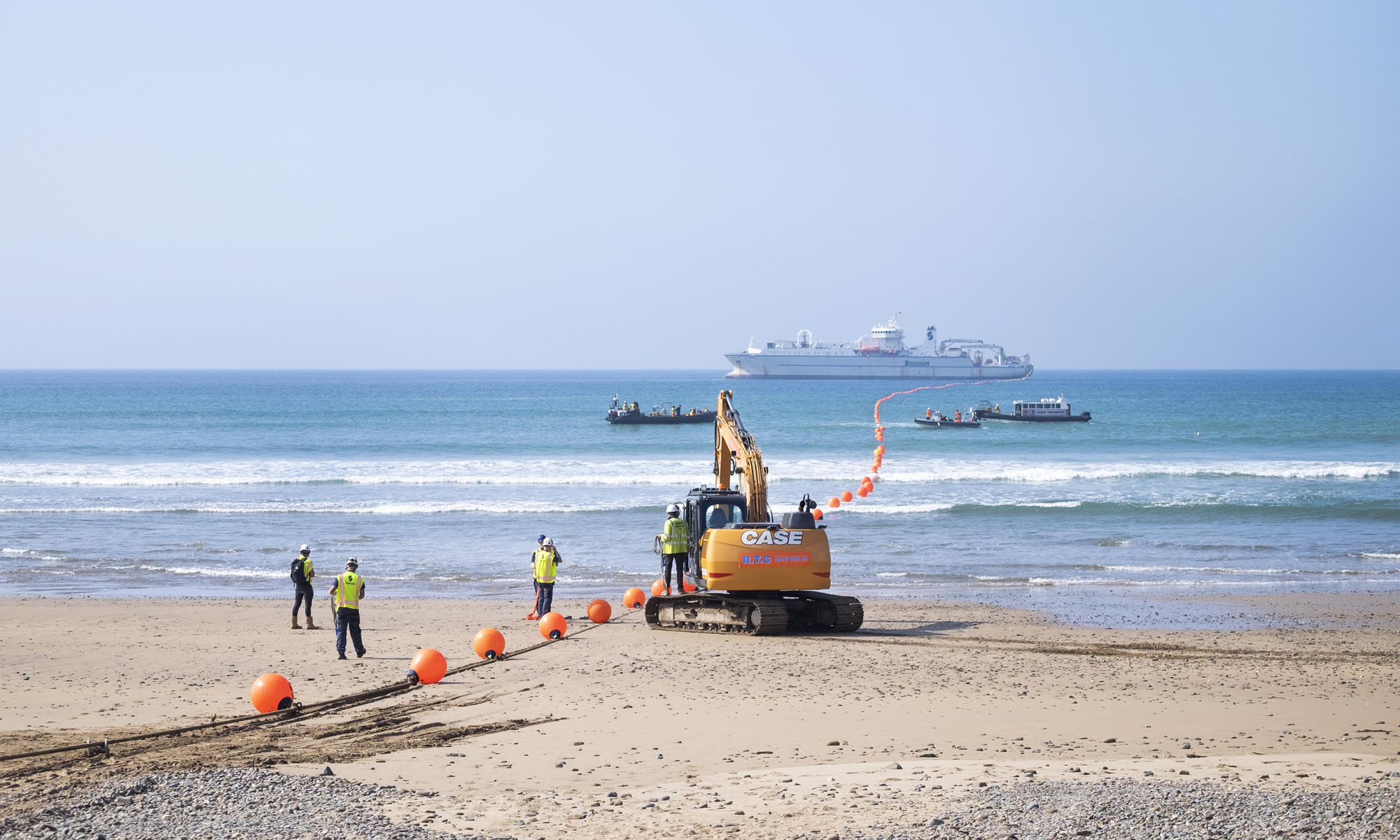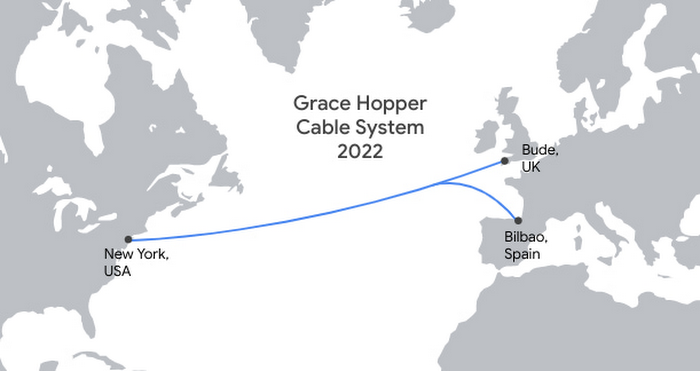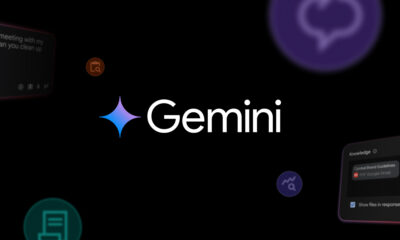News
Google’s 3,900-Mile Grace Hopper Undersea Cable Lands In The UK
Undersea cables are the backbone of the internet, carrying around 98% of international traffic.

Google has a good reason to celebrate this week because the tech giant has successfully completed its 3,900-mile undersea cable. The cable is named Grace Hopper, after the American computer scientist who was one of the first programmers of the Harvard Mark I computer, and it connects New York (United States) to Bude (United Kingdom) and Bilbao (Spain).

The Spanish branch was completed earlier in September as the first-ever Google-funded route to Spain. Now that the UK branch has landed as well, the mission, which was first announced last July, has reached its end.
“Grace Hopper represents a new generation of the trans-Atlantic cable coming to the UK shores and is one of the first new cables to connect the US and the UK since 2003,” says Google in the official announcement. “Grace Hopper will connect the UK to help meet the rapidly growing demand for high-bandwidth connectivity and services”.
The cable uses a cutting-edge multi-directional fiber switching architecture that lets Google better move traffic around outages and provide the reliability necessary to power critical Google services like Meet, Gmail, and Google Cloud.
The multi-directional fiber switching architecture will also help tightly integrate the upcoming Google Cloud region in Madrid into Google’s global infrastructure. The new region will leverage Telefonica’s Madrid region infrastructure to foster Spain’s digital transformation and advance 5G mobile edge computing.
Also Read: Carrefour City+ In Mall Of The Emirates Becomes Dubai’s First Contactless Store
Undersea cables like Grace Hopper are the backbone of the internet, carrying around 98% of international traffic. The first optical telecommunications cables were laid on the ocean floor back in the 1980s, and their number has since then grown to more than 400. The actual optical fibers that carry data between continents are only as thick as a single strand of human hair, but they’re protected by several layers of shielding and isolation.
News
Google Releases Veo 2 AI Video Tool To MENA Users
The state-of-the-art video generation model is now available in Gemini, offering realistic AI-generated videos with better physics, motion, and detail.

Starting today, users of Gemini Advanced in the MENA region — and globally — can tap into Veo 2, Google’s next-generation video model.
Originally unveiled in 2024, Veo 2 has now been fully integrated into Gemini, supporting multiple languages including Arabic and English. The rollout now brings Google’s most advanced video AI directly into the hands of everyday users.
Veo 2 builds on the foundations of its predecessor with a more sophisticated understanding of the physical world. It’s designed to produce high-fidelity video content with cinematic detail, realistic motion, and greater visual consistency across a wide range of subjects and styles. Whether recreating natural landscapes, human interactions, or stylized environments, the model is capable of interpreting and translating written prompts into eight-second 720p videos that feel almost handcrafted.
Users can generate content directly through the Gemini platform — either via the web or mobile apps. The experience is pretty straightforward: users enter a text-based prompt, and Veo 2 returns a video in 16:9 landscape format, delivered as an MP4 file. These aren’t just generic clips — they can reflect creative, abstract, or highly specific scenarios, making the tool especially useful for content creators, marketers, or anyone experimenting with visual storytelling.
Also Read: Getting Started With Google Gemini: A Beginner’s Guide
To ensure transparency, each video is embedded with SynthID — a digital watermark developed by Google’s DeepMind. The watermark is invisible to the human eye but persists across editing, compression, and sharing. It identifies the video as AI-generated, addressing concerns around misinformation and media authenticity.
While Veo 2 is still in its early phases of public rollout, the technology is part of a broader push by Google to democratize advanced AI tools. With text-to-image, code generation, and now video creation integrated into Gemini, Google is positioning the platform as a full-spectrum creative assistant.
Access to Veo 2 starts today and will continue expanding in the coming weeks. Interested users can try it out at gemini.google.com or through the Gemini app on Android and iOS.



















